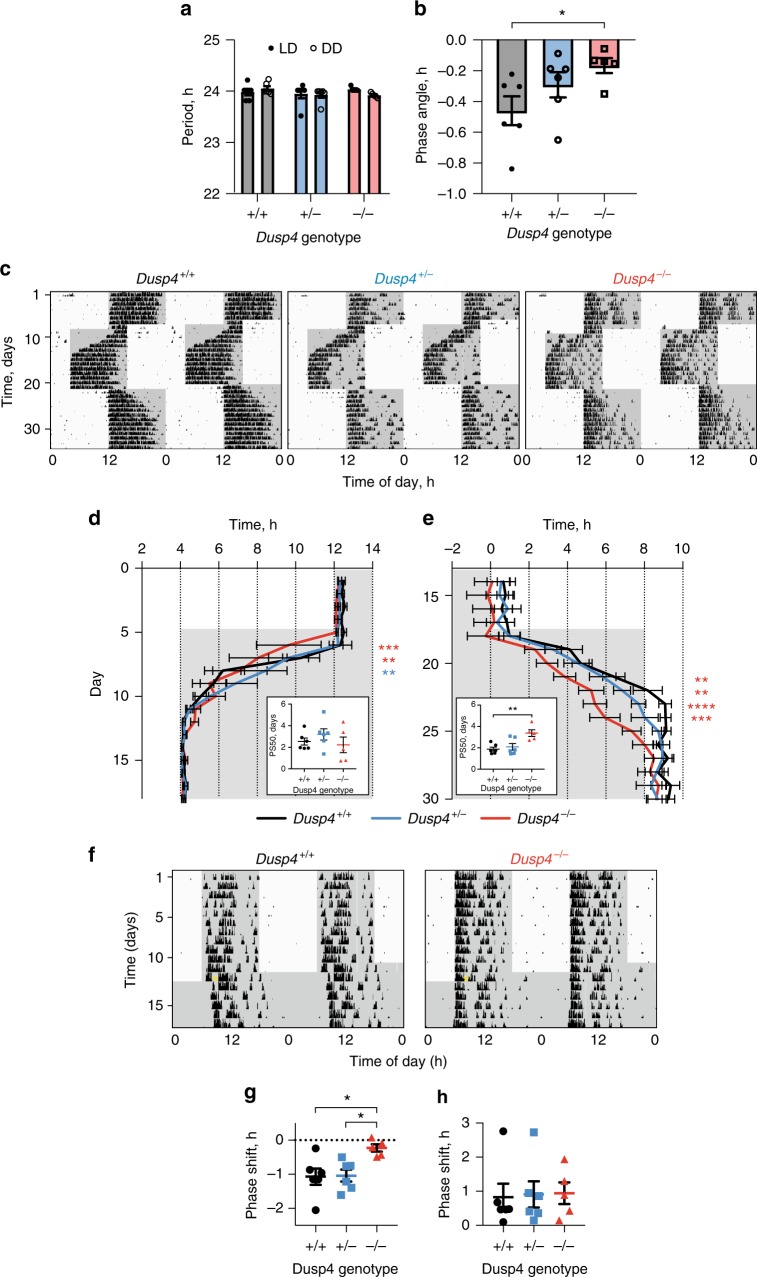Fig. 6.
Mice lacking Dusp4 exhibit attenuated circadian responses to light in vivo. a, b Group data for circadian period of wheel-running activity rhythms in 12:12 light:dark (LD) and continuous dim red light (DD) (a) and phase angle of entrainment (b) of Dusp+/+ (n = 6), Dusp4+/- (n = 6) and Dusp4−/− (n = 5) mice (mean ± SEM). Phase angle refers to time from lights off until activity onset. Negative values indicate activity onset after lights off. c Representative double-plotted actograms of wheel-running behaviour of Dusp+/+, Dusp4+/- and Dusp4−/− mice exposed to an 8 h phase advance and an 8 h phase delay in LD cycle. Grey shading represents dim red light. d, e Group data for activity onsets during the phase advance (d) and activity offsets during the phase delay (e) of Dusp+/+, Dusp4+/- and Dusp4−/− mice (mean ± SEM). Two-way ANOVA with Dunnett’s multiple comparisons test. Inset: 50% phase shift values (PS50; mean ± SEM) of phase advances and phase delays, one-way ANOVA with Dunnett’s multiple comparisons test. f Representative double-plotted actograms of wheel-running behaviour of Dusp+/+and Dusp4−/− mice exposed to a 30-minute phase delaying light pulse (yellow asterisk) at ZT14 after 12:12 LD, then immediately placed into DD. Grey shading represents dim red light. g, h Group data for phase delays (g) and phase advances (h) of wheel-running activity of Dusp+/+, Dusp4+/- and Dusp4−/− mice following light pulses at CT14 and CT22, respectively. One-way ANOVA with Tukey’s multiple comparisons. *P < 0.05, **P < 0.01, ***P < 0.001, ****P < 0.0001

